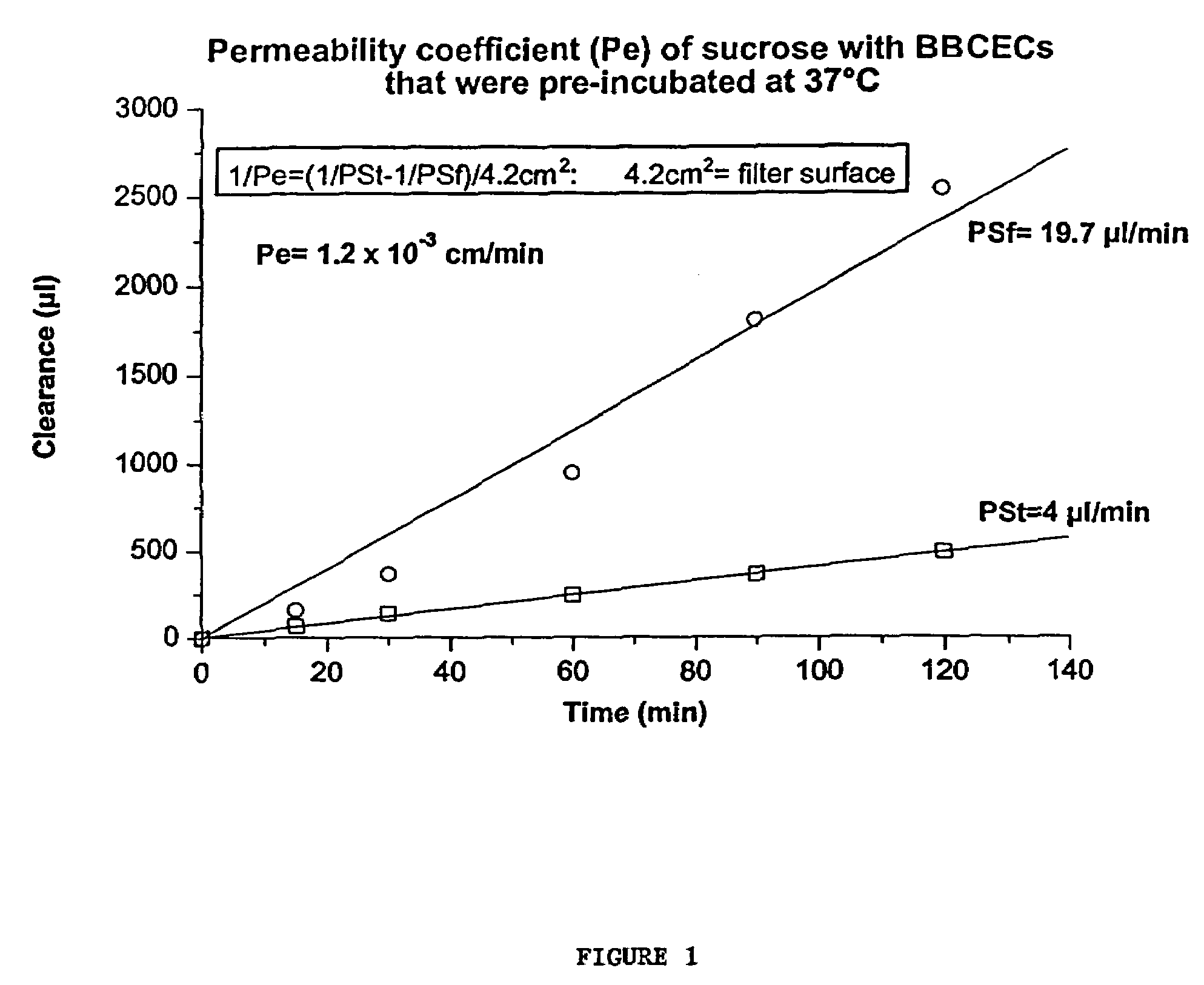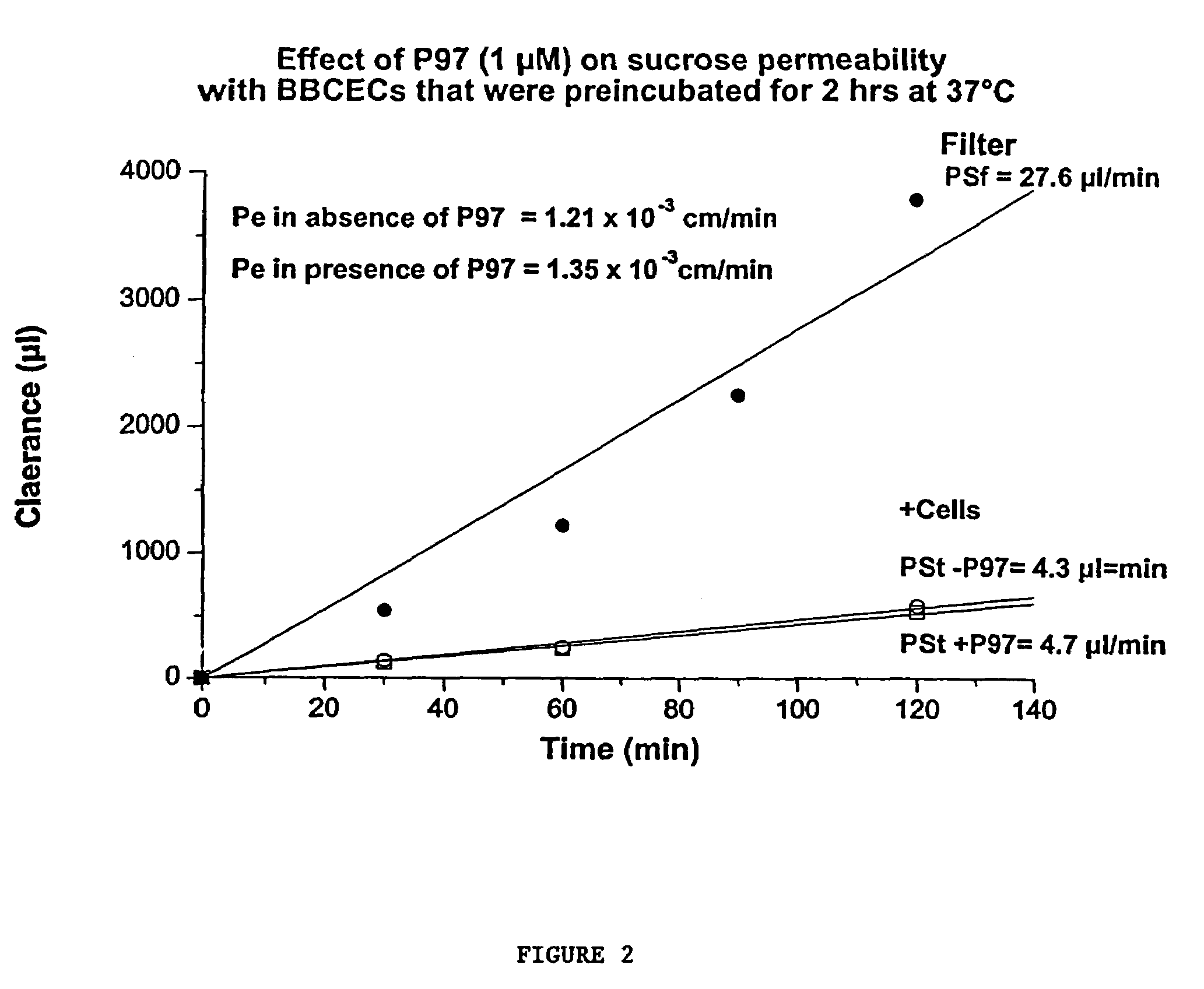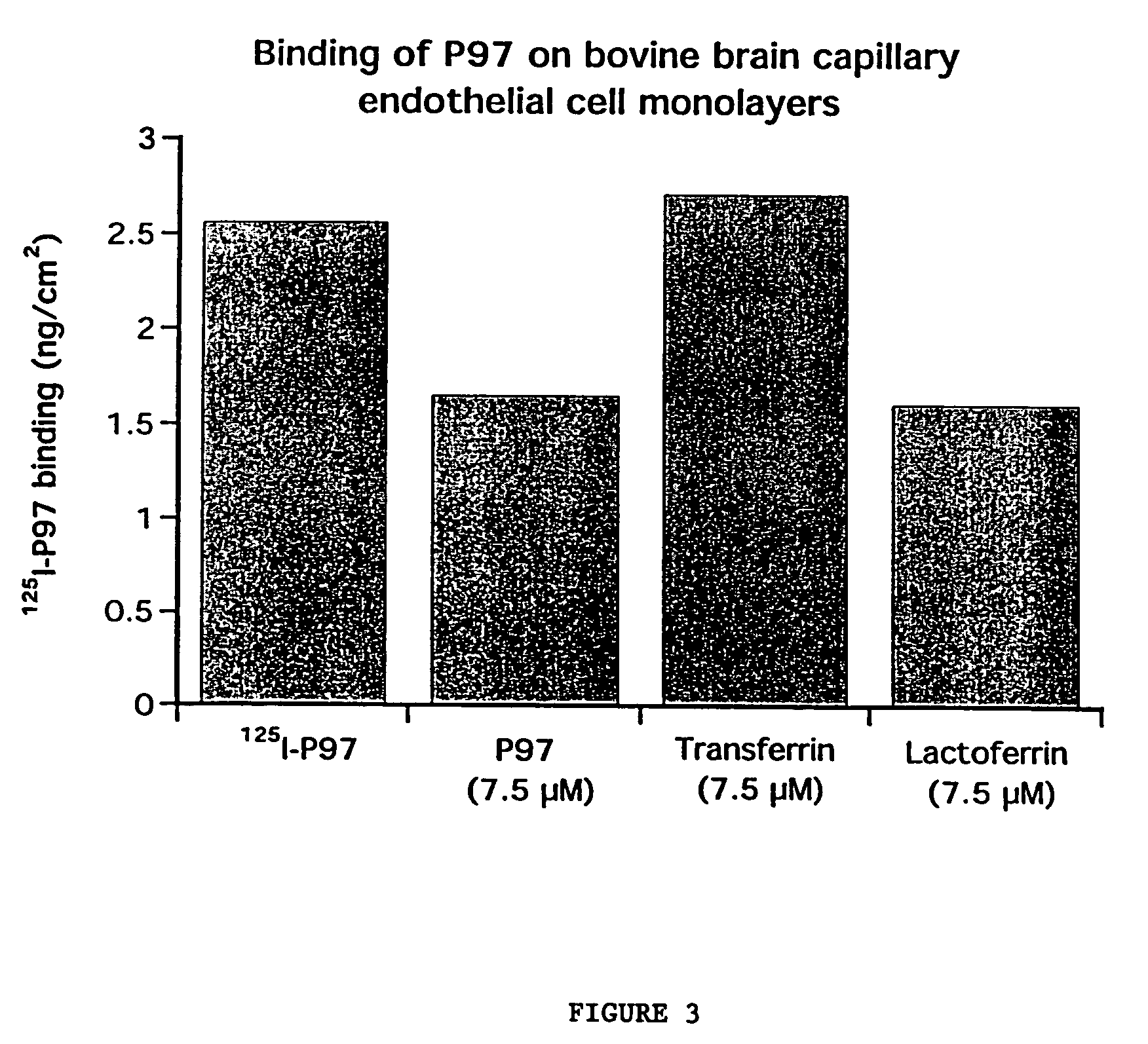Compositions for modulating blood-brain barrier transport
a technology of bloodbrain barrier and compounds, applied in the direction of hydrolases, in-vivo radioactive preparations, peptide/protein ingredients, etc., can solve the problems of affecting the biochemical role and metabolism of mtf, impede the access of pharmacological agents to cerebral tissues, and the functional parallels between these proteins have not been confirmed, so as to reduce the neurological side effects of a therapeutic agent, reduce the amount of iron uptake into the cell, and reduce the neurological side effects o
- Summary
- Abstract
- Description
- Claims
- Application Information
AI Technical Summary
Benefits of technology
Problems solved by technology
Method used
Image
Examples
examples
[0225]The examples provide exemplary protocols for assessing transcytosis in vitro and for characterizing the interaction of p97 and MTf-R receptor modulators or ligands with the p97 receptor or the blood-brain barrier:
example i
In Vitro Model of the Blood-Brain Barrier
[0226]A. Astrocytes. Primary cultures of mixed astrocytes were prepared from newborn rat cerebral cortex (Dehouck, et al., Journal of Controlled Release (1992)). Briefly, after removing the meninges, the brain tissue was forced gently through a 82 μm nylon sieve. Astrocytes were plated on six-well microplates at a concentration of 1.2×105 cells / ml in 2 ml of optimal culture medium (DMEM) supplemented with 10% fetal heat inactivated calf serum. The medium was changed twice a week.
[0227]B. BBCEC. Bovine brain capillary endothelial cells (BBCECs) were obtained from Cellial Technologies. The cells were cultured in the presence of DMEM medium supplemented with 10% (v / v) horse and 10% heat-inactivated calf serum, 2 mM glutamine, 50 μg / ml gentamycin, and 1 ng / ml basic fibroblast growth factor, added every other day.
[0228]C. BBB. The in vitro model of BBB was established by using a co-culture of BBCECs and astrocytes, basically as described in Dehouc...
example ii
Binding of p97 with BBCECs and Rat Brain Endothelial Cells
[0236]B. Binding studies of p97. Binding of p97 was performed with BBCECs and Rat Brain Endothelial Cells that were pre-incubated 2 hrs in Ringer / Hepes to avoid any interference from the astrocytes.
[0237]FIG. 3 demonstrates the competitive binding of p97 with cold p97, transferrin and lactoferrin. For the binding experiments, cells were incubated for 2 h at 4° C. in Ringer / Hepes in the presence of [125I]-p97 (25 nM) and increasing concentrations of cold-p97 or high (7.5 micromolar) concentrations of transferrin or lactoferrin. At the end of the incubation, the filters were gently washed at 4° C. three times with 4 ml of cold-PBS. Then the associated radioactivity of endothelial cells was determined by removing the membrane of the culture insert and counting it in a gamma counter.
[0238]The results of FIG. 3 demonstrate that [125I]-p97 binding to the BBCECs was competitively inhibited by cold-p97 and by lactoferrin, but signifi...
PUM
 Login to View More
Login to View More Abstract
Description
Claims
Application Information
 Login to View More
Login to View More - R&D
- Intellectual Property
- Life Sciences
- Materials
- Tech Scout
- Unparalleled Data Quality
- Higher Quality Content
- 60% Fewer Hallucinations
Browse by: Latest US Patents, China's latest patents, Technical Efficacy Thesaurus, Application Domain, Technology Topic, Popular Technical Reports.
© 2025 PatSnap. All rights reserved.Legal|Privacy policy|Modern Slavery Act Transparency Statement|Sitemap|About US| Contact US: help@patsnap.com



